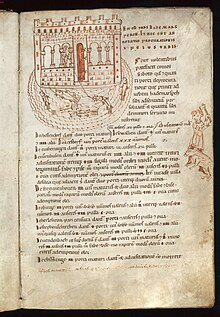
The Codex Falkensteinensis (also referred to as Codex diplomaticus Falkensteinensis or Liber traditionum comitatus Neuenburg-Falkenstein) is an important medieval manuscript. It was written in 1166 as a feud directory and urbarium by Canons of the Herrenchiemsee monastery, commissioned by the Counts of Neuburg-Falkenstein. Composed at the Neuburg castle near Vagen it is considered the only preserved secular codex from the Hohenstaufen era, the oldest extant book of conveyances from a secular lordship[1] and the oldest European family archive.[2] The original Latin version is preserved in the archives of the Bavarian state, a second Middle High German edition is lost.
- ^ Freed, John B. (January 2004). "Bavarian Wine and Woolless Sheep: The Urbar of Count Sigiboto IV of Falkenstein (1126–ca. 1198)". Viator. 35: 71–112. doi:10.1484/J.VIATOR.2.300193.
- ^ Freed, John B. (January 2006). "The Creation of the Codex Falkensteinensis (1166): Self-Representation and Reality". Representations of Power in Medieval Germany. International Medieval Research. 16: 189–210. doi:10.1484/M.IMR-EB.3.3440. ISBN 978-2-503-51815-2.
